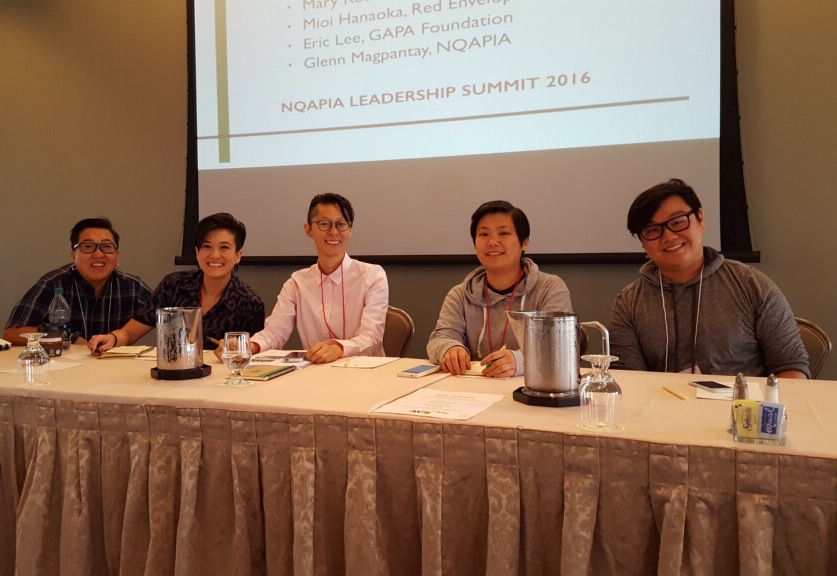by Mary Keovisai
Over a humid August weekend, the National Queer Asian Pacific Islander Alliance (NQAPIA) brought 115 LGBTQ AAPIs and allies together to New Orleans for their 2016 Leadership Summit. One of the best things about the Summit was that it allowed smaller, newer, volunteer-ran organizations the opportunity to network with and learn from more established organizations. From discussing different organizing strategies to finding safety within communities and families, participants were able to connect with others experiencing similar difficulties from across the country and across experiences.
Recognizing the frustrations that can come from working in nonprofit work, participants had the opportunity to share and learn from each other. It was a weekend of brainstorming, envisioning, and re/assessing. Aside from asking what it was our community needs, we also have to ask, how do you successfully grow and sustain an organization through human capital, social capital, and of course financial capital.
To address the issue of financial capital and to demystify philanthropy, the Summit held a plenary titled, Resourcing Our Communities. Alice Y. Hom, an AAPIP consultant, organized the plenary made-up of different types of funders, from family foundations to giving circles. The panelist on the plenary—Alison Sparks, the Masto Family Foundation; Mioi Hanoaka, Red Envelope Giving Circle; Eric Lee, GAPA Foundation; Glenn Magpantay, NQAPIA; and myself—shared information about how under-represented and under-resourced communities can find funding through community-driven means. Alice started us off by explaining the state of AAPI LGBTQ funding and how less than 1% of total dollars given was directed towards AAPI LGBTQ organizations. The plenary highlighted giving circles as an action against this and participants were encouraged to seek them out as a funding source, as well as smaller, private and local foundations. While it was great to share about the support that giving circles can provide to grassroots organizations, it was also a reminder of how difficult it is for AAPI LGBTQ organizations in smaller cities to survive and grow. Given the current climate of limited funding, it becomes a matter of growing the number of supporters and funders. As the fastest growing racial group, we are our own greatest resource. We need to use our personal stories of action to encourage others and use campaigns like, Give OUT Day, a national day of giving for the LGBTQ community, to fundraise through friends and family. It’s through this individual and collective, community-driven giving that will help our AAPI LGBTQ organizations thrive.
Philanthropy is a big word. It can be a scary word to those looking to receive funding and to potential givers. It can prevent people from going after that grant. It can prevent people from giving because you assume you need to give big. It doesn’t have to be, though. Being a part of Lacuna Giving Circle has taught me as much. The more we take philanthropy into our own hands, the more power we give to our communities, and the more we make room for ourselves at the table. Philanthropy doesn’t have to be big, it can just be enough. Enough to support a program one time. Enough to recognize good work. Enough to inspire others.
Mary is a member of Lacuna Giving Circle, Ph.D. student, and sleep aficionado.

